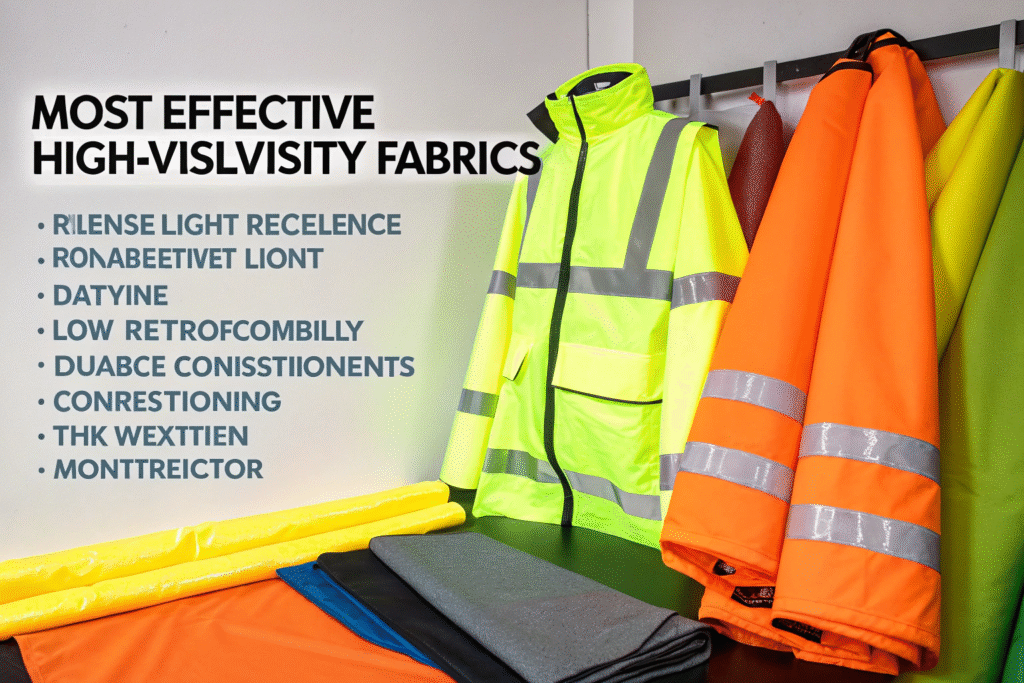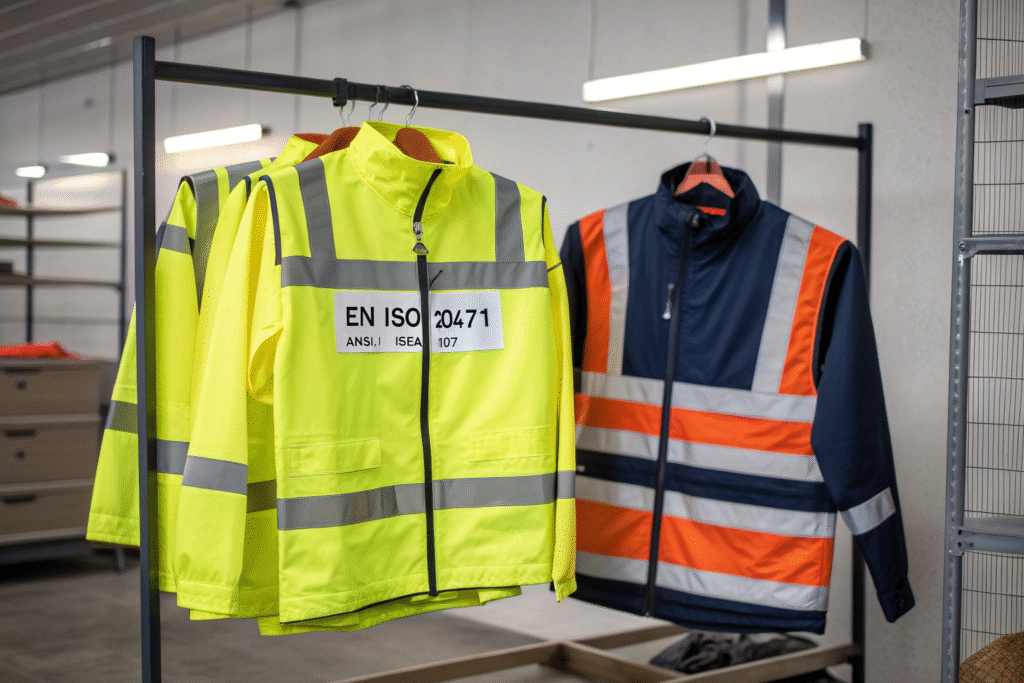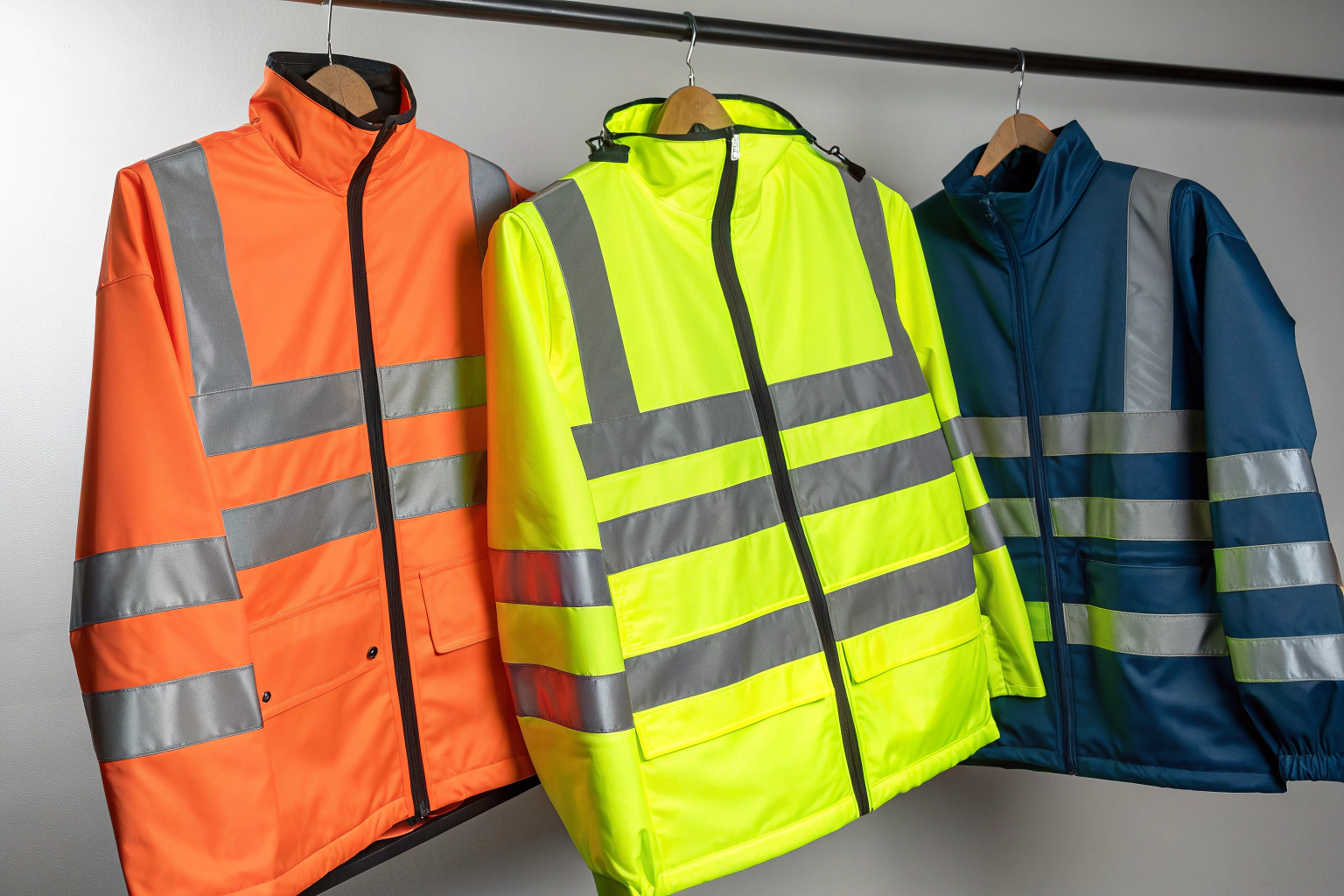Selecting the right high-visibility fabric requires understanding both performance characteristics and regulatory requirements. For importers like Ron, this means finding materials that meet safety standards while managing costs and supply chain logistics effectively.
High-visibility fabrics combine fluorescent colors with retroreflective materials to make wearers conspicuous in various lighting conditions. The selection process should focus on three key aspects: workplace hazard assessment, compliance with relevant safety standards, and durability requirements for the intended use environment.
What Defines Effective High-Visibility Fabric?
Quality hi-vis fabrics must deliver consistent performance in all lighting conditions while withstanding environmental challenges.
The most effective high-visibility fabrics integrate three essential elements: intense fluorescent background material for daytime visibility, certified retroreflective components for low-light conditions, and durable construction that maintains performance through repeated washing and weather exposure.

Why do fluorescent colors matter for daytime safety?
Fluorescent colors like orange, yellow-green, and red-orange provide superior daytime visibility because they absorb ultraviolet light and re-emit it as visible light, creating a glowing effect that stands out against natural backgrounds. The specific hue selection often depends on industry conventions—construction typically uses orange-red while emergency services prefer red. We help clients choose colors that maximize visibility for their specific work environments while meeting standard requirements.
How do retroreflective materials enhance nighttime protection?
Retroreflective materials use microscopic glass beads or prismatic lenses to redirect light back toward its source, making workers visible in darkness when illuminated by vehicle headlights. This targeted light return creates significantly brighter signals than standard reflective materials. Our fabrics incorporate certified retroreflective trims that exceed minimum RA values specified in international standards, ensuring reliable performance in challenging conditions.
What Standards Govern High-Visibility Fabrics?
Understanding the regulatory landscape ensures compliance and proper protection level selection.
The European EN ISO 20471 and American ANSI/ISEA 107 standards establish performance requirements for hi-vis materials, addressing color chromaticity, retroreflection intensity, durability, and garment design specifications. Both systems classify protection levels based on workplace risk assessment.

How do protection classifications compare between standards?
EN ISO 20471 uses three classes (1-3) based on minimum material areas, while ANSI/ISEA 107 employs types (O, R, P) categorized by work environment. Class 1/Type O serves low-risk areas with minimal public traffic, Class 2/Type R protects workers near roadway traffic, and Class 3/Type P provides maximum visibility for high-risk environments like emergency response and high-speed roadwork. We assist clients in selecting appropriate classifications and ensure fabrics meet all material requirements.
What durability tests ensure long-term performance?
Both standards require rigorous testing for colorfastness to washing, light exposure, and perspiration, along with mechanical tests for retroreflective material adhesion and flexibility. Our CNAS-accredited laboratory conducts these assessments and provides comprehensive documentation, including third-party verification from recognized organizations, ensuring fabrics maintain compliance throughout their service life.
How Can Buyers Verify Compliance Efficiently?
Proper verification protects your investment and ensures worker safety while simplifying regulatory compliance.
Implement a systematic approach to compliance verification that includes document review, sample testing, and supplier qualification assessment. Our digital tracking system provides instant access to all compliance documentation for complete supply chain transparency.

What documentation demonstrates compliance?
Request three essential documents: accredited laboratory test certificates, material specification sheets with care instructions, and manufacturer's compliance statements. We provide complete documentation packages digitally and support independent verification through pre-production samples from actual manufacturing batches.
How can sample testing validate performance?
Conduct practical tests including visual assessment under different lighting conditions and flashlight retroreflection checks in darkness. For definitive verification, use independent testing facilities to measure luminance factors, colorfastness, and retroreflective performance against applicable standards. Our transparent sampling process has achieved a 98% compliance success rate with international buyers.
Conclusion
Choosing high-visibility fabric requires careful consideration of performance properties, regulatory requirements, and verification processes. Understanding the complementary roles of fluorescent and retroreflective materials, along with proper standard classification, ensures optimal protection for specific work environments.
At Fumao Textiles, we combine manufacturing expertise with comprehensive testing capabilities to deliver hi-vis materials that meet international standards while offering competitive pricing and reliable logistics. Our integrated production from weaving to finishing ensures consistent quality, and our experience with international requirements simplifies compliance for global buyers. For high-visibility fabrics that balance safety, quality, and value, contact Business Director Elaine at elaine@fumaoclothing.com to discuss your specific requirements.










